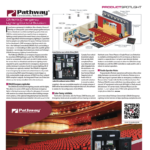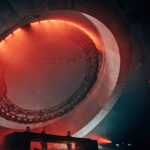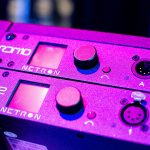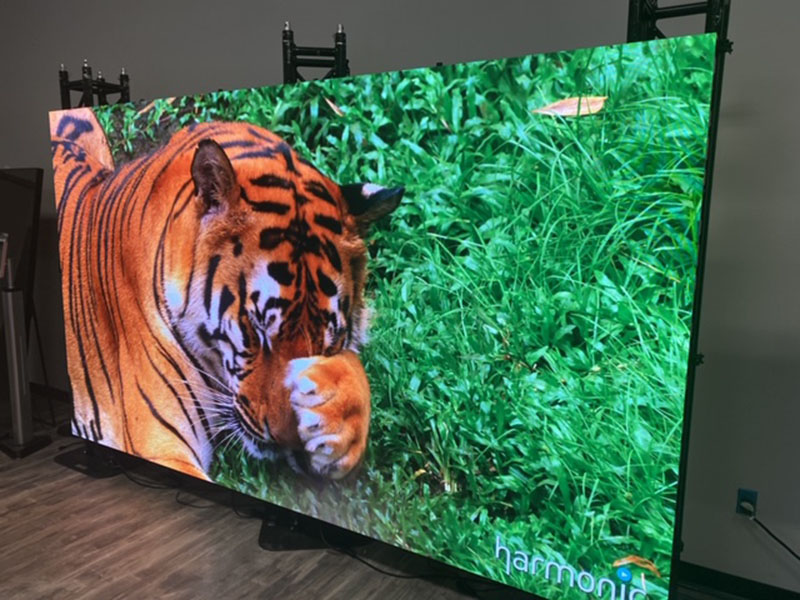
You’ve probably heard at this point, that a Vanguard LED product took the prized pie at 2018 and 2019 InfoComm’s “In Real Life” show. The showstopper product line at last year’s event was Vanguard’s Axion, the flagship product and incredibly sub-one-pixel-pitch range, which killed it at the show. The excellent news is that they have officially indeed not stopped killing this product but have added something new to augment the series. Enter the Axion II — an advancement on the product line that takes video cabinets to an unprecedented level in the LED display business.
Vanguard LED Displays, as far as industrial technological growth has it, has been riding the forefront of LED video display market technology for quite a long time. They’ve got some pretty high laurels on which to rest: Best in Show at InfoComm 2019 for their Chromium Chip-On-Board series, and the incredibly fine pixel display product Axion took InfoComm 2018’s Best in Show championship prize fight, showcasing two solid years of heightened LED tech advancement from Vanguard. With the advent of the ChipFlip technology, they have advanced their Hi Definition Axion line to the next level. Let’s look at some comparisons below.

Axion I — Extreme Pixel Pitch
For starters, let’s review the original Axion Series: natively 16:9, fully front serviceable, flat back with no external jumper cables on the rear, ideal for install and wall mounting/recessed mount gigs. The Axion I cabinet comes with pre-threaded mounting locations. The Axion LED Video Display Series cabinets, if arrayed with equal cabinet height and width (an example would be 10×10 or 8×8), the entire display will retain a native 16:9 viewing aspect ratio.
Pixel Pitch for this series ranges from P0.94 to P2.5. Axion I is a TAA approved product. Axion I has hot swappable modules with no need to reprogram or recalibrate after servicing. Magnetic LED modules allow for quick and easy module replacement. There are no internal ribbon cables, allowing for a single cable-less PCB connection for data and power. IC drivers allow for customizable refresh and scan rates. Receiving cards allow for custom gray levels from 14-18 bit. Redundant power and data are available. Seam brightness compensation is standard as well as high gray scale and high refresh rates. Superb color and brightness uniformity. Available half size cabinets.
The cabinet itself is only 2.3 inches deep, and with a wall mount frame that Vanguard provides as a turnkey solution, the entire mounting depth is under four inches for ADA compliance.
Vanguard can add Glue on Board technology, whereby an epoxy resin coats the surface of the display, making a highly impact resistant protective surface that protects against the intrusion of humidity, is anti-static, anti-dust and waterproof on the front of the display. Cooling was also never much of an issue, even though that protective resin coat can cause some heat buildup. Vanguard can employ common cathode technology with the glue on board tech resulting in a 40 percent reduction in heat. That was a pretty high milestone to jump, but Vanguard accomplished that leap in 2019.
Axion II: ChipFlip Technology
Last summer at InfoComm 2020’s Virtual event, Vanguard introduced a new technology, ChipFlip — a method of encapsulating fine-pixel-pitch SMD1010 LED lamps to PCB boards. Traditional engineering and fabrication would see the circuit design for SMD displays with both electrodes facing upwards. With Vanguard’s ChipFlip process, both electrodes face downward. This new technology does not require traditional soldering. The chip and substrate are electrically and mechanically interconnected by solder paste bonding. The strength of the solder paste bonding used in the ChipFlip Process creates chips that are 100 times stronger that the chips in the regular SMD process, according to the company. As a result, the failure rate of ChipFlip is 5 PPM, compared to SMD’s rate of 50-100 PPM — that’s a decrease in failure rate compared to last year’s technology.
Vanguard’s ChipFlip Process also employs common cathode technology — electric current passes through the ground. Power is not flowing constantly but is only drawn as needed. As a result, the heat generated by the panel is greatly reduced, up to 40 percent. The ChipFlip Series panels have high contrast, high image quality with HDR10 compatibility.
Axion II models are available down to a 0.9mm pixel pitch and up to a 1.5mm pixel pitch. It’s a TAA approved product that’s fully front serviceable with hot swappable modules as well, with no need to reprogram or recalibrate after servicing. There are no internal ribbon cables, allowing for a single clean connection at the module for both data and power. This product has a flat back with no external cables, ideal for wall mounting or recessing. The cabinet itself is only 2.3 inches deep, and with a wall mount frame that Vanguard provides as a turnkey solution, the entire mounting depth is under four inches for ADA compliance.
Power consumption on the cabinets is laudable comparatively in this sub-one-pixel arena of display product — Axion II cabinets average between 50-80W per cabinet, with max draw around 130-180W. That obviously would depend on several factors, including your refresh rate, definition and content. The cabinets are extremely bright, capable of reaching 4000 NITs, levels that are typically only accomplished for outside products.
The Axion II line is highly customizable. Options include protective epoxy resin, custom cabinet sizes, 90-degree cabinets and, in addition, Vanguard can provide customizable performance benchmarks based on the project’s parameters. Beyond the 90-degree option, these are not curving panels. Axion’s contrast ratio is 3000:1.
Another random tidbit about Vanguard: Vanguard is the only company in the world that is TAA approved, which allows them to sell any division of the U.S. government, including the military. As the U.S. military faces serious security threats from many countries, Vanguard has become their leading supplier of LED displays. Vanguard is also developing LED displays for rapid deployment systems, domes, cylinders and spheres. Vanguard is an American-owned and based company, located in Florida.
You’re advised to check out the Axion II series for serious, sincerely real-world clarity that must be seen for itself. Contact the truly knowledgeable Max Perry and ask him to tell you about two of the cooler video technologies on the market, both developed by Vanguard.
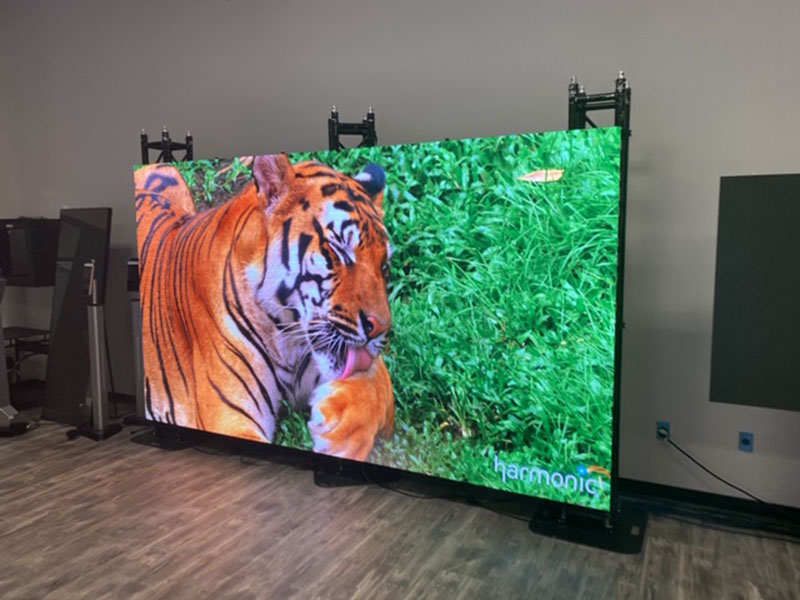
Hardware
This series is an indoor product with an IP range of 30, built for dry locations and indoor installations. Panels measure 640mm x 360mm x 58.42mm (and are 2.3 inches thick; ADA compliance is under 4 inches). Cabinets contain a single cable-less PCB connection for data and power to each module. Keep in mind with Vanguard products, the simple design is a feature — the simplicity is mastery in this product, because even these single PCB connections are redundant on both power and data for the zero failure situations. In Entertainment, a zero-failure scenario may be a network news control room, but for the forward deployed and first responders, Vanguard’s making products for zero failure scenarios that involve potential loss of life when they don’t come through. Zero-failure literally means the product can never fail.
Axion II is a fanless design with low power consumption — the IC driver spec allows for customizable refresh and scan rates, and the receiving card allows for customizable grays from 14-18 bit. The cabinets have excellent color and brightness uniformity, using both highly accurate manufacturing and seam brightness compensation, which aids in further alleviating any visual disconformity by manipulating pixel intensity at the seams between cabinets. Weight on the Axion II cabinet is 16.5 lbs., comparable to other sub-one-pixel products on the market, but generally a little heavier due to superior materials used in construction that ensure the product against inadequate handling.
For more information, visit www.vanguardled.com
